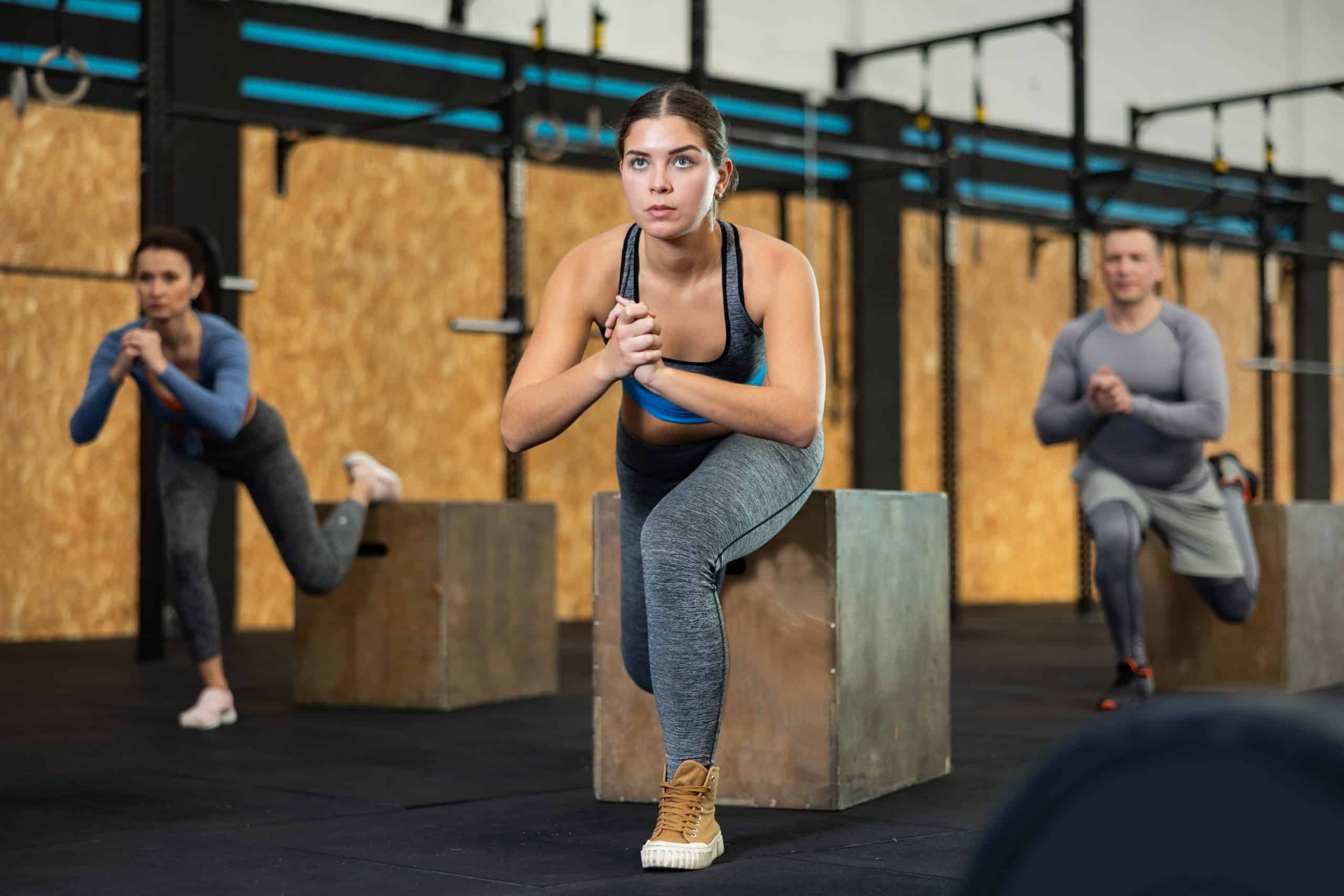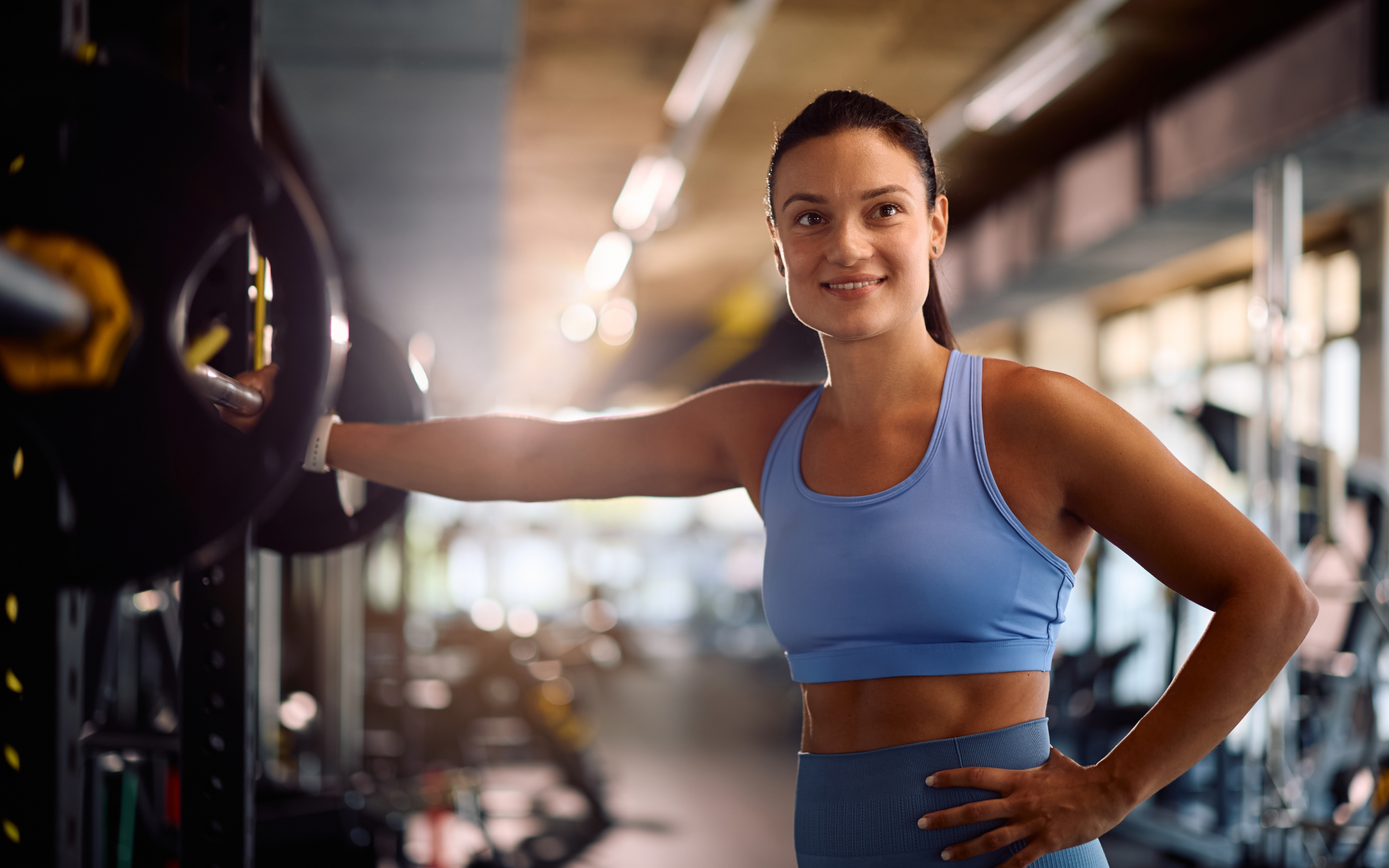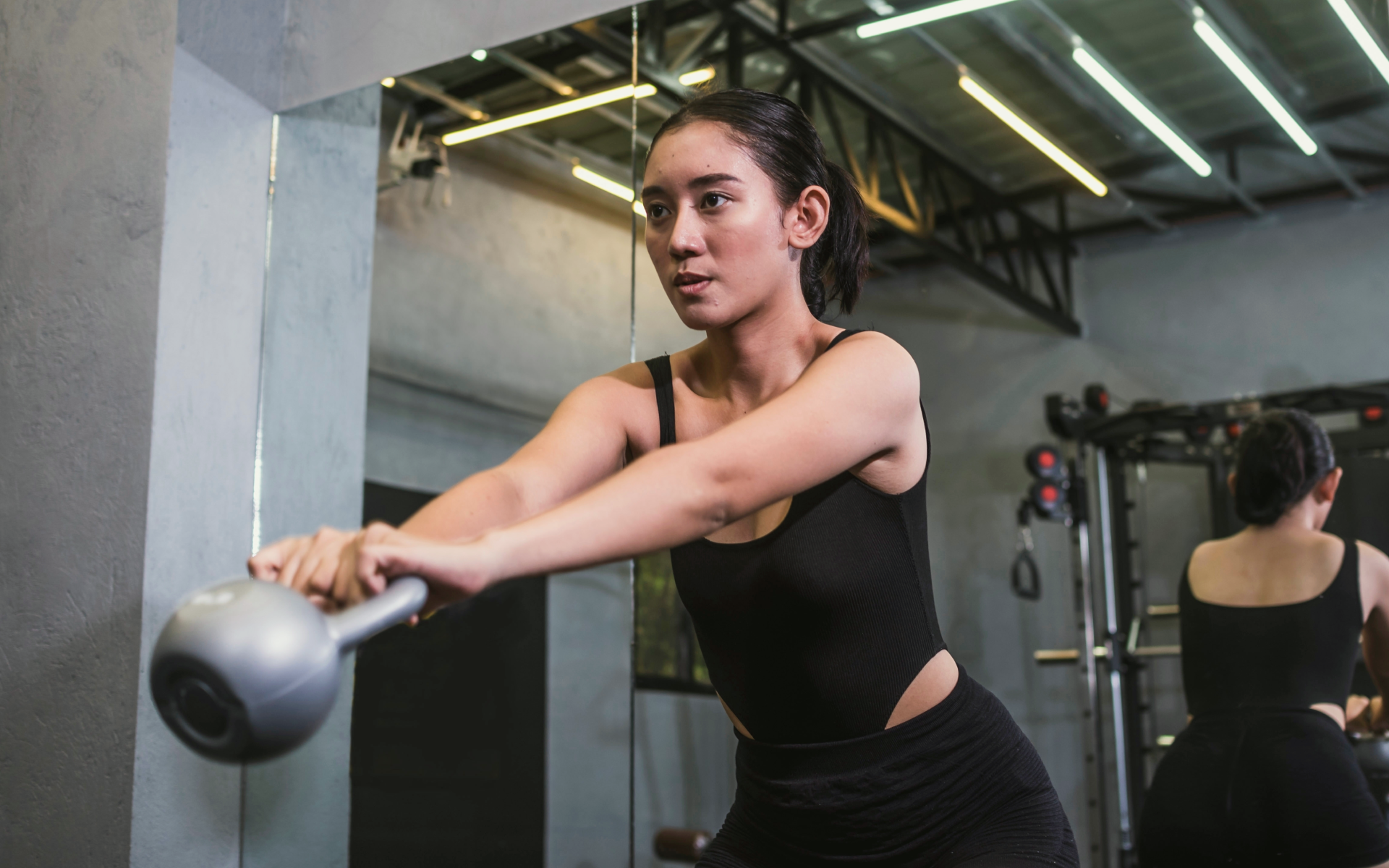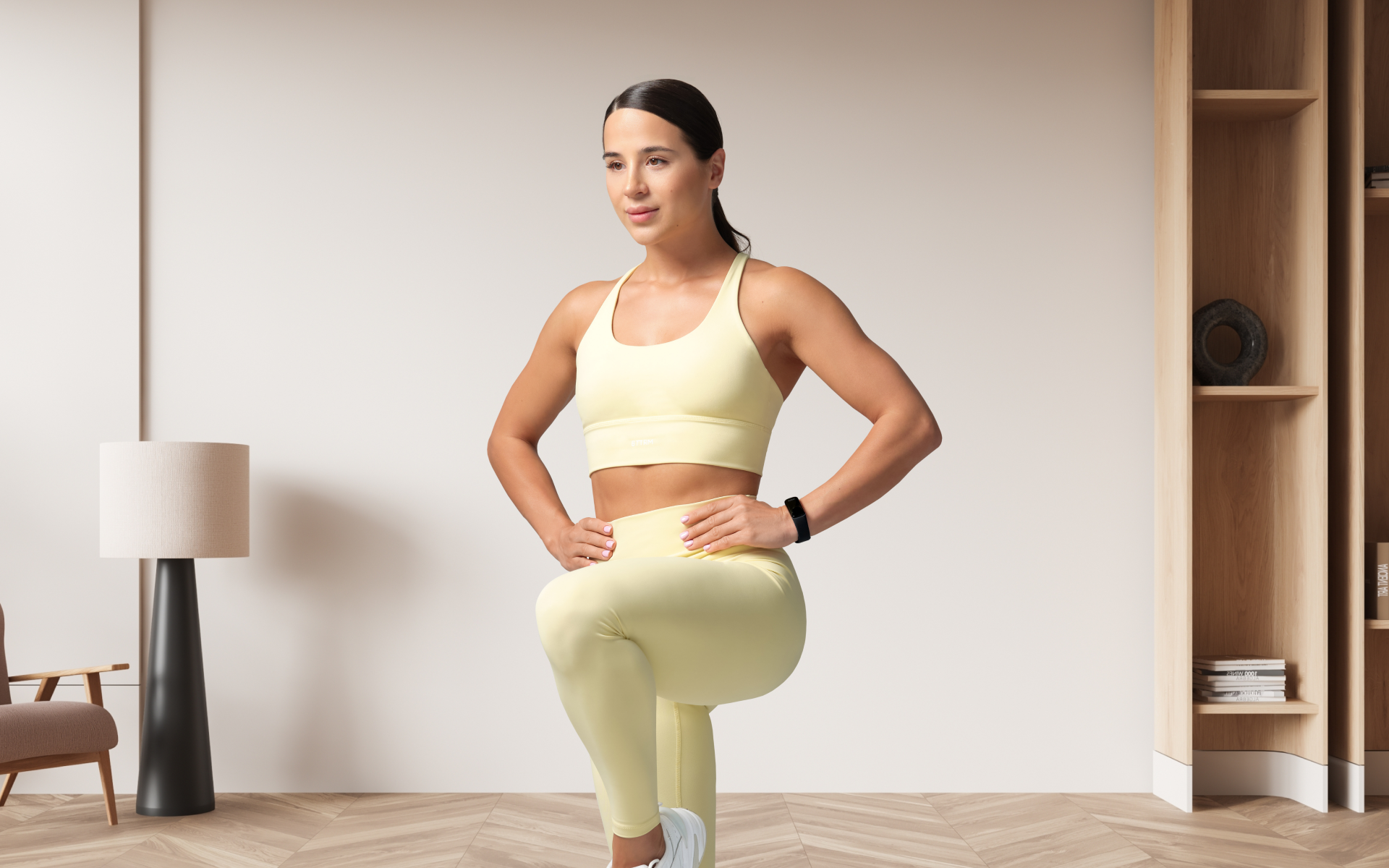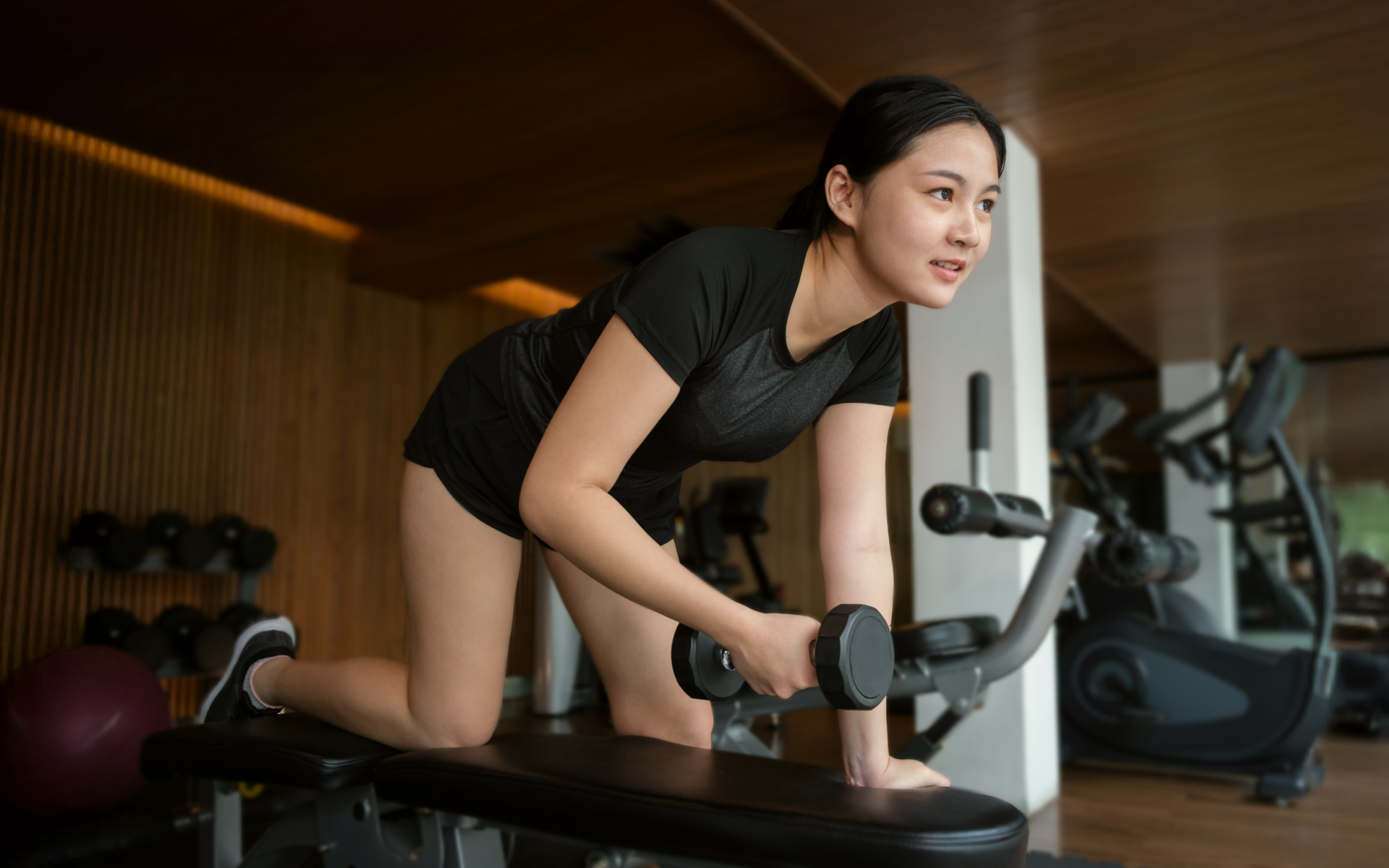Strong, defined legs are something many of us strive for. Squats are celebrated for being one of the most fundamental and effective lower-body exercises for strength and hypertrophy, and for good reason. Squats are a highly functional compound movement pattern that requires activation for nearly all of the muscles of the lower extremities.
They are also versatile as they can be performed with countless variations. Today, we’ll discuss one of these variations: the Bulgarian split squat. This variation involves one foot being on the floor with the other behind you, elevated on a chair or bench. This setup shifts the exercise to primarily target the front leg, adding a challenging single-leg component that makes this exercise an interesting cross between a squat and a lunge.
The Bulgarian split squat’s prime movers are the quadriceps, hamstrings, and glutes, with many other muscle groups activating for the necessary stability aspect of this movement pattern.
In this article, we’ll discuss the main muscles that are worked during the Bulgarian split squat, the benefits, and how to perform it correctly.
What Muscles Does a Bulgarian Split Squat Work?
Let’s jump directly into Bulgarian Split Squat Muscles worked during the execution of the exercise.
For starters, this impeccable movement engages numerous major and minor muscles.
Major Muscles Activated
- Gluteal muscles. Gluteal muscles are well-engaged in the Bulgarian split squat and are composed of the gluteus maximus, gluteus medius, and gluteus minimus (1). The gluteus maximus works with the hamstrings to help drive the body upward during the concentric phase of the exercise, and controls the descent during the eccentric portion. The gluteus medius and minimus play a stability role in ensuring proper alignment throughout the exercise.
- Quadriceps. The quadriceps consist of four muscles: the rectus femoris, vastus lateralis, vastus intermedius, and vastus medialis (2). These muscles are highly engaged during Bulgarian split squats to extend the knees and provide power.
- Hamstrings. These muscles are located at the back of the thigh and consist of three muscles – the biceps femoris, semimembranosus, and semitendinosus (3). When you perform a Bulgarian split squat, the hamstrings help the glutes produce the hip extension that is needed to drive the body upward during the concentric portion of the movement and control the lowering of your body during the eccentric portion.
The combination of the knee extension by the quadriceps and the hip extension by the glutes and hamstrings make these muscle groups the prime movers for this exercise.
Minor Muscles Activated
- Hip Flexors. The hip flexors in the back leg (the one that is elevated on a bench or chair) provide the necessary stability and minor assistance with weight distribution during this exercise.
- Core Muscles. Core muscles, which consist of the rectus abdominis, obliques, transverse abdominis, lumbar musculature, and pelvic floor, are activated during the Bulgarian split squat for proper balance, stability, and alignment.
- Foot and Ankle Muscles. Your gastrocnemius and soleus (aka your calf muscles), the muscles that surround your ankle, and your intrinsic foot musculature provide crucial stability during this exercise. This is particularly important due to the unilateral nature of Bulgarian split squats.
- Adductors. These muscles are located along the inner thigh (adductor brevis, adductor longus, and adductor magnus) and help stabilize the hip joint and provide proper alignment during the exercise (4).
Looking for a way to break the vicious cycle of weight loss and tone up all the jiggly parts? Watch the extra pounds fly off and your muscles firm up with the BetterMe: Health Coaching app!
Are Bulgarian Split Squats a Good Exercise?
For many people, the Bulgarian split squat is a very good exercise due to its ability to incorporate so many important aspects simultaneously. It’s a compound movement pattern that elicits significant muscle activation from some very important muscle groups. It also provides a crossover between the strength benefits of a squat and the stability benefits of a lunge.
While it’s not a replacement for a standard squat or lunge, it’s another effective tool to add to your fitness collection. As with a standard squat or lunge, it has many modifications to meet the needs of just about any fitness level. For example, for an individual with balance impairments, the exercise can be performed while holding onto a countertop or wall, and with the back leg on a lower surface to allow for a more balanced weight distribution than the conventional version of a Bulgarian split squat.
Due to its unilateral nature, it can be used as a corrective exercise for muscle imbalances and is a commonly used rehabilitation exercise for this reason. As with any exercise, it won’t be a good fit for everyone. If you’re unable to modify the Bulgarian split squat in a way that avoids sharp pain or discomfort, or in a way that you can safely perform it without increased risk of falls, you shouldn’t incorporate the exercise into your routine.
Why Are Bulgarian Split Squats So Hard?
Bulgarian split squats are thought of as a challenging exercise by many, but this is all relative. For some, a standard Bulgarian split squat will be far too easy to trigger adaptations, so they’ll need to add resistance and/or a plyometric component. For others, a standard Bulgarian split squat is completely out of the question, whether due to its necessity for excellent balance and stability or pain preventing a full range of motion.
The good news is that the exercise is truly only as hard as you want to make it based on your goals and abilities. External support can be used to help with balance and decreased resistance. Decreased depth can be used for strength deficits or pain and the placement of your back leg makes a big difference for weight distribution. Start simple and work your way up as you improve. Here are some common mistakes to avoid with this challenging exercise:
- Leaning too far forward. A forward lean will decrease core stabilization, move your center of gravity from its most efficient position, and mildly de-emphasize the quadriceps in favor of increased activation of the glutes and hamstrings. If you have back issues, it may also cause increased pain due to prolonged flexion during exertion. All of these things can also contribute to making balance and stability more challenging.
- Not keeping your front foot flat on the ground. Rising onto the toes of your front foot as you squat down can mean you’re either leaning too far forward at your hips and feel as if you need to rise on your toes to support the shift in your weight to stay balanced, or you’re keeping your front foot too close to the chair or bench and you need to move it forward for better balance and alignment. Either way, focusing on keeping your front foot flat on the ground will increase balance and stability, in addition to optimizing muscle recruitment throughout the movement.
- Allowing your knee to fall inward or outward. This mistake is often caused by weakness and/or tightness in the hips and is a compensatory movement strategy. Unfortunately, it can cause increased stress on the knee and inefficient muscle recruitment.
- Using your back leg to generate the force. Shifting your weight too far onto your back leg will cause issues with your alignment and shift away from the focus of the exercise. If you’re unable to perform the exercise without shifting your weight to your back leg for help, you need to either hold onto something for upper-extremity assistance or decrease your depth.
If you notice any of these common mistakes presenting themselves as you start performing this exercise, slow things down and get to the root of what is causing it. Hopefully, you’ll be able to correct the problem yourself as you get more experience. As previously stated, don’t be afraid to regress to an easier variation of the exercise and work your way up. Performing a regression with correct form is more effective than a poorly performed standard repetition.
As always, if you’re unsure if this exercise is safe and appropriate for you based on your own health conditions, you should consult your doctor.
Read more: How Many Calories Does 100 Squats Burn?
Why Do Bulgarian Split Squats Work So Well?
Bulgarian split squats work so well by engaging the large muscle groups in the hips and knees, as well as numerous smaller muscle groups for balance and stability. The unilateral movement also promotes balance and coordination.
The exercise is easily modifiable with progressions and regressions based on your fitness level and individual goals and needs.
How to Do Bulgarian Split Squats Properly
Proper alignment and sequencing are necessary to ensure optimal muscle recruitment and decreased risk of injury.
The Proper Performance of a Bulgarian Split Squat
- Stand in front of a sturdy bench or chair with your core engaged and your feet hip-distance apart.
- Pick up your left foot and place it on the bench (chair) behind you. Place the top of your foot on the bench and align your ankle joint with the edge of the bench.
- Your back foot should be far enough behind your front foot so that when you reach the bottom of the movement, your back knee is approximately in line with your back hip.
- Keep nearly all weight shifted to the front leg. The back foot should just be resting lightly on the bench/chair.
- Look straight ahead, engage your core, keep your chest high, and bend your right knee, allowing your left knee and ankle to naturally bend without taking on the load with your back leg.
- Keep the weight balanced evenly across your right foot as you lower. Hinge slightly forward at the hips, ensuring your right knee doesn’t cave inward and outward.
- Inhale, lowering down until your right quadriceps are parallel to the ground.
- Press back to a standing position by pushing through your right foot to stimulate the upward phase of the exercise. Exhale as you stand.
- Step your left foot off the bench after completing a full set to one side. Ensure you perform the same repetitions and sets for each leg.
BetterMe: Health Coaching app is a foolproof way to go from zero to a weight loss hero in a safe and sustainable way! What are you waiting for? Start transforming your body now!
What Modifications Are There for a Bulgarian Split Squat?
Below are other variations of Bulgarian split squats, Some of them don’t require a chair while others add challenge by using weights, resistance bands, or an exercise ball.
Bulgarian Split Squat with an Exercise Ball
Adding an exercise ball will help you challenge your stabilizing muscles more. This includes the core, foot, and ankle musculature.
Step-by-step instruction:
- Elevate your back leg onto an exercise ball.
- Lower down in the same manner as the traditional version of the exercise, while allowing the ball to roll back to a distance where your back knee and hip are in line at the bottom of the movement.
- Allow the ball to roll back to its starting position as you come up.
Bulgarian Split Squat with Resistance Bands
Another variation for more difficulty involves using a resistance band. The band adds resistance when you lift out of the squat.
Step-by-step instruction:
- Place the elastic band under your front foot.
- Hold the top of the resistance band in line with your shoulders to add resistance as you perform the Bulgarian split squat.
Weighted Bulgarian Split Squat
Once you’ve learned to perform the exercise properly with just your body weight, you can add weights for progressive overload.
Step-by-step instruction:
- Hold a pair of dumbbells or kettlebells in your hands with your arms by your sides.
- Perform the exercise as described in the traditional version above.
- For an increased challenge, try a goblet hold, where you hold a dumbbell or kettlebell against your chest instead of allowing your arms to rest by your sides.
Read more: A Simple Guide To Doing Wall Squats With Ball
FAQs
Are 2 sets of Bulgarian split squats enough?
As you’re perhaps used to with this type of question, the answer is: it depends. Two sets of a compound exercise such as a Bulgarian split squat have been shown to produce adequate training stimulus for positive muscle adaptations, assuming the load and repetition ranges are also adequate.
As an overgeneralization, you should aim for anywhere between two and six sets of an exercise at an intensity that brings you within one to two reps of failure by the last one to two sets if your goal is to improve muscular strength.
So, yes, two sets of Bulgarian split squats are probably enough, just as long as your intensity and overall volume are appropriate.
Why are Bulgarian split squats so tiring?
Bulgarian split squats are very tiring for certain individuals as they require output from many muscle groups in the lower extremities. As they’re more of a unilateral exercise than regular squats, the stabilizer muscles need to be much more active to maintain balance, in addition to the larger muscle groups that contribute to the actual movement.
Where should I feel Bulgarian split squats?
You should feel the majority of the work being done in your quadriceps, hamstrings, and glutes on the front leg. You’ll also feel a little fatigue in your foot, ankle, and calf in the front leg, in addition to in the front of your hip on the back leg.
Why are Bulgarian split squats better than lunges?
Bulgarian split squats are neither better nor worse than lunges. They simply provide a slightly different training stimulus. They activate most of the same muscles, but Bulgarian split squats shift your weight more to the front leg than lunges do (due to the back leg being elevated during Bulgarian split squats), which makes them a little more of a unilateral balance challenge.
The Bottom Line
We’ve uncovered what a Bulgarian split squat is, how to perform it, variations of the exercise, and its benefits. Some people find this exercise intimidating as it looks quite challenging, but in reality, it’s highly adaptable to almost any fitness level.
Give it a try for yourself and discover its many benefits for your strength, stability, and balance. Stick with it and you’ll be a pro at it in no time!
DISCLAIMER:
This article is intended for general informational purposes only and does not serve to address individual circumstances. It is not a substitute for professional advice or help and should not be relied on for making any kind of decision-making. Any action taken as a direct or indirect result of the information in this article is entirely at your own risk and is your sole responsibility.
BetterMe, its content staff, and its medical advisors accept no responsibility for inaccuracies, errors, misstatements, inconsistencies, or omissions and specifically disclaim any liability, loss or risk, personal, professional or otherwise, which may be incurred as a consequence, directly or indirectly, of the use and/or application of any content.
You should always seek the advice of your physician or other qualified health provider with any questions you may have regarding a medical condition or your specific situation. Never disregard professional medical advice or delay seeking it because of BetterMe content. If you suspect or think you may have a medical emergency, call your doctor.
SOURCES:
- Muscles of the Gluteal Region (2024, teachmeanatomy.info)
- Anatomy, Bony Pelvis and Lower Limb: Thigh Quadriceps Muscle (2023, ncbi.nlm.nih.gov)
- Anatomy, Bony Pelvis and Lower Limb, Hamstring Muscle (2023, ncbi.nlm.nih.gov)
- Muscles in the Medial Compartment of the Thigh (2023, teachmeanatomy.info)
- Between-Leg Mechanical Differences as Measured by the Bulgarian Split-Squat: Exploring Asymmetries and Relationships with Sprint Acceleration (2017, mdpi.com)
- Association ankle function and balance in community-dwelling older adults (2021, journals.plos.org)
